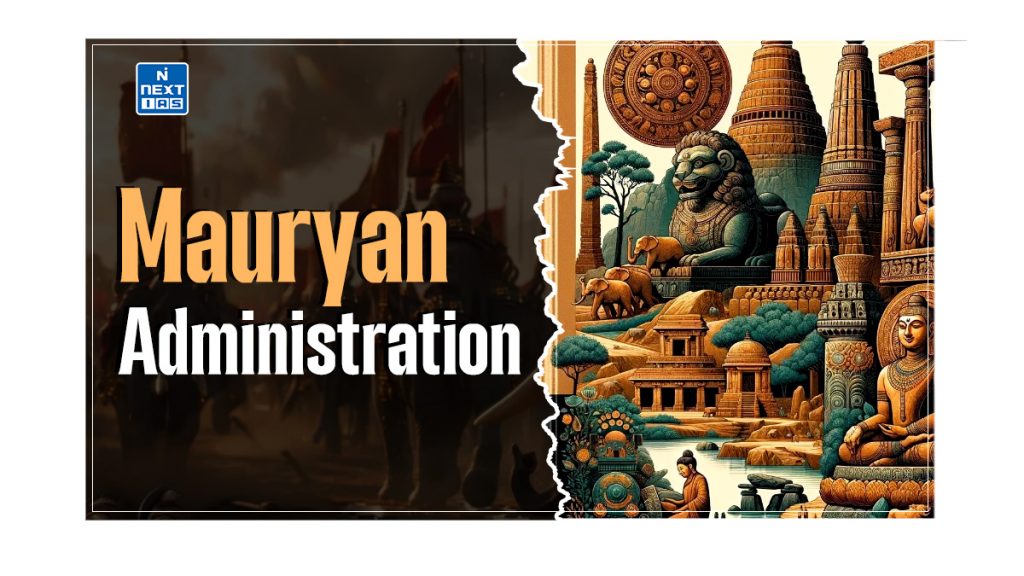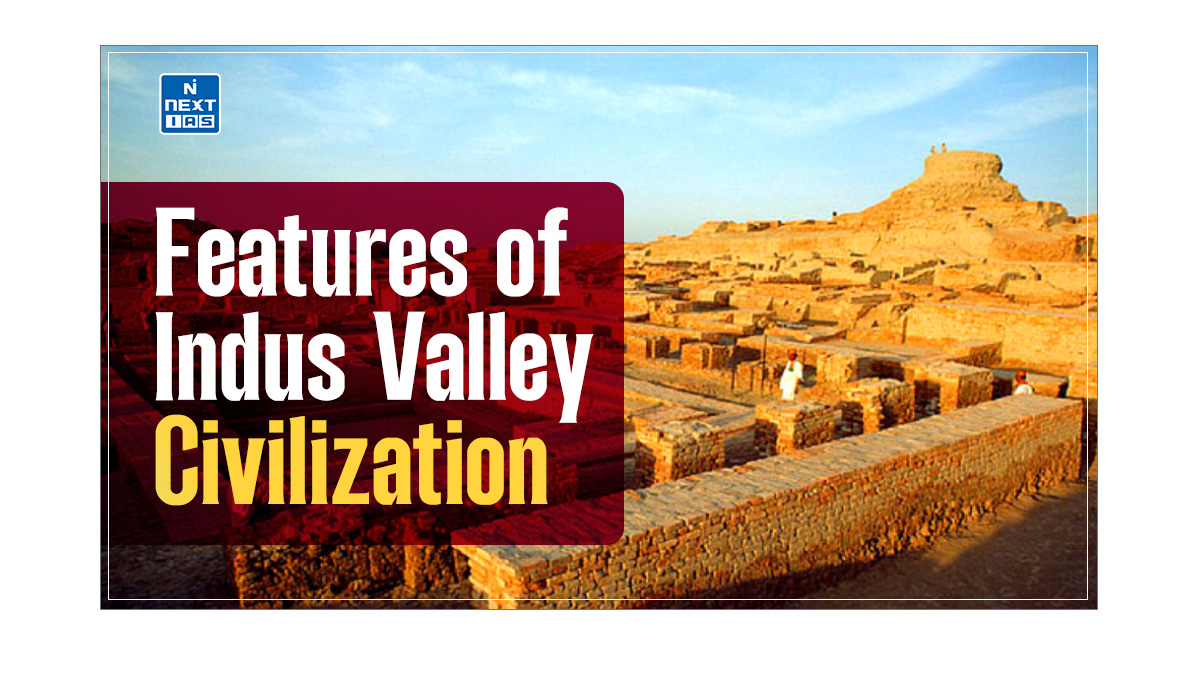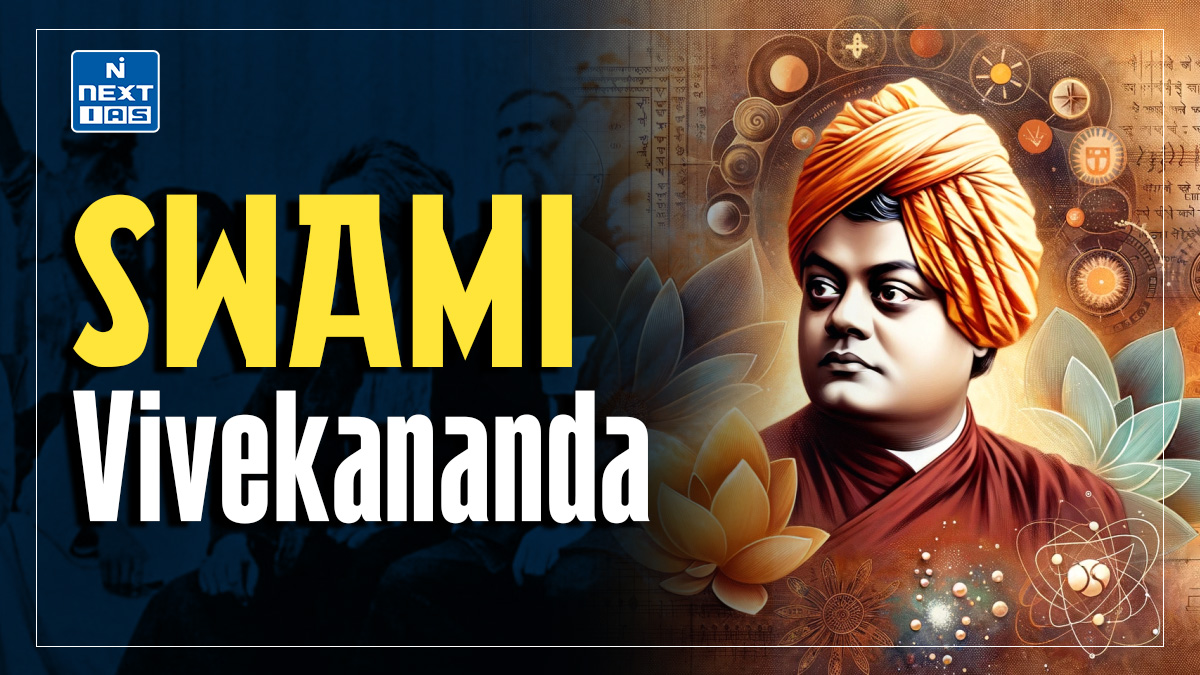
The Mauryan Administration was a highly centralised and efficient system of governance established during the Mauryan Empire, one of the largest empires in ancient India. Its significance lies in its advanced bureaucratic structure, which facilitated effective governance, social welfare, and the expansion of the empire. This article aims to study in detail the various aspects of the Mauryan Administration, including its structure, revenue systems, military organisation, and public welfare initiatives.
About Mauryan Age
- The Mauryan Empire, founded by Chandragupta Maurya in 322 BCE, was one of ancient India’s largest and most powerful empires.
- From modern-day Afghanistan to Bengal and southward to the Deccan Plateau, the empire was known for its efficient administration, military prowess, and significant cultural achievements.
- Under Ashoka’s reign, the empire reached its zenith, promoting Buddhism and implementing policies based on ethical governance.
- The Mauryan Empire’s contributions to political unity, economic prosperity, and cultural exchange laid the foundation for later Indian civilisations.
Read our detailed article on the Mauryan Empire and Ashoka.
Mauryan Administration
- The administrative system prevalent in Mauryan times was a vast and highly centralised bureaucratic rule with the king as the fountainhead of all powers.
- The king claimed no divine rule; instead, it was a form of parental despotism.
- Kautilya claimed the king as ‘Dharamapravartaka’ or promulgator of social order.
- The highest functionaries at the centre were called Tirthas and were paid 48000 Pannas. They were 18 in number.
- Some of the highest functionaries include:
- Mantri (Chief Minister),
- Purohita (Chief Preist),
- Senapati (commander-in-chief), and
- Yuvaraja (crown prince) was the highest functionary among the Tirthas.
Mantriparishad (Council of Ministers) in Mauryan Age
- In the Mauryan Administration, there was also a Mantriparishad who assisted the king with daily administration.
- Kautilya mentions 27 superintendents (adhyakshas), mostly to regulate economic activities.
| List of Superintendents in Mauryan Age | |
| Superintendents | Economic Activities |
| Panyadhayaksha | Commerce |
| Samsthadhyaksha | Markets, checking wrong practices |
| Pautavadhyaksha | Weights and measures |
| Navadhyaksha | State boats |
| Sulkadhyaksha | Tolls |
| Sitadhyaksha | Crown lands |
| Akshapataladhyaksha | Accounts |
| Manadhayaksha | Measurement |
| Pattanadhyaksha | Ports |
| Ganikadhayaksha | Courtesan |
| Devatadhyaksha | Religious institutions |
| Lakshanadhyaksha | Mint |
Political Administration in Mauryan Age
The political administration of the Mauryan Empire can be seen as follows:
The Capital in Mauryan Age
- Six committees, each consisting of five members, administered Pataliputra, the capital of Mauryas.
- These committees were entrusted with sanitation, care of foreigners, registration of birth and death, regulation of weights and measures, and similar functions.
Provincial Administration in Mauryan Age
- Except for the capital, Pataliputra, the empire was divided into four provinces, each controlled by a ruler, a prince or a royal family member.
| Provinces | Capital |
| Uttarapatha (Nothern province) | Taxila |
| Avantirashtra (Western Province) | Ujjain |
| Prachi (Eastern and Central) | Patliputra |
| Kalinga (Eastern Province) | Toshali |
| Dakshinipatha (Southern province) | Suvarnagiri |
District Administration in Mauryan Age
- Provinces were sub-divided into districts and had three main officers:
- Pradesika: He/she is responsible for the district’s overall administration.
- Rajuka: He/she was responsible for revenue administration and later the judiciary, particularly in rural areas, under Pradesika.
- Yukta: The accountants.
Sub-district and Village Administration in Mauryan Age
- The sub-district consisted of 5 to 10 villages and was administered by Gopa (accountant) and Sthanika (tax collector).
- The villages were administered by a village headman responsible for Gopas and Sthanika.
City Administration in Mauryan Age
- As described by Meghasthenes, six boards, each consisting of five members, administered the capital Pataliputra.
- These boards were entrusted with matters relating to industrial arts, care of foreigners, registration of births and deaths, tolls, etc.
- Nagarika headed the city administration and was assisted by two subordinate officials, Sthanika and Gopa.
- Royal control extended over a large area. This was due to Pataliputra’s strategic position, where royal agents could sail up and down the four directions.
- The royal roads were also well-built and maintained. Megasthenes speaks of a road connecting north-western India with Patna.
- The Asokan inscriptions appear on essential highways. Medieval transportation improved due to more road settlements and stirruped horses.
Tax Administration in Mauryan Age
- The Maurayan period constitutes a landmark in the taxation system in ancient India.
- Kautilya named many taxes to be collected from peasants, artisans and traders.
- This required robust and efficient machinery for assessment, collection and storage.
- The Mauryans attached greater importance to the evaluation than to collection and storage.
- The ‘Samaharta’ was the highest officer in charge of assessment, and the ‘Sannidhata’ was the chief custodian of the state treasury and the storehouse.
- Land revenue was the state’s main source of income. Peasants paid one-fourth of the produce as Bagha and an extra tax of Bali.
- Epigraphic evidence shows that there were granaries to help local peoples during famines, droughts, etc.
Economic Conditions in Mauryan Age
- Both the agricultural and industrial sectors made much headway. Due to royal incentives, lands were colonised on a large scale for farming purposes.
- Industrial arts and crafts proliferated due to swift communication through a network of excellent and long roads and incentives given by the government.
- A striking social development was the large-scale employment of slaves in agricultural operations. The state brought new land under cultivation with the help of cultivators and kshetras.
- These new lands fetched a lot of revenue. Those who were provided with irrigation facilities had to pay for them.
- The punched marked coins, which carried the symbols of the peacock, hill, and crescent, formed the imperial currency of the Mauryas.
- They helped collect taxes and paid officers in cash. Because of its uniformity, the currency must have facilitated marked exchange in a wider area.
- Another feature of the economy during this time was the formation of Shernis and Guilds.
- Sherins were associations of craftspeople and merchants. Merchants’ Shernis organised trade. Shernis also served as banks where rich people deposited their money.
- These guilds were given high autonomy because of their importance in the urban economy. These guilds could fix their own rules of administration in the guild.
- The guilds even had judicial powers over their members. However, its autonomy was not absolute, as the guilds had to be registered with the king, who had the ultimate administrative control over them.
- Tolls were also levied on commodities brought to town for sale. The state enjoyed a monopoly over mining, liquor sales, arms manufacture, etc., which naturally brought money to the royal exchequer.
Social Conditions in Mauryan Age
- Meghasthense divided the Maurayan Empire into seven Castes: Philosophers, Farmers, Soldiers, Herdsmen, Artisans, Magistrates, and Councilors.
- He confused caste with profession. Again, he notices the absence of slavery, but Indian sources contradict this. Slavery existed during the Mauryas in the form of agricultural labourers and domestic workers.
- Kautilya recommended the recruitment of Vaishyas and Kshudras in the army, but their actual enrolment is highly doubtful.
- In addition to the four regular castes, he refers to at least five mixed castes that lived beyond the pale of Aryan society. The Kshudras were still considered the collective property of the three varnas.
Espionage in Mauryan Age
- An elaborate system of espionage backed the administrative mechanism. Spies operated in the guise of Sanyasis, wanderers, beggars, etc and were two types:
- ‘Sanstha’ and
- ‘Sanchari’.
- The former worked by remaining stationed at a public place and later by moving from place to place.
- There were three types of officers in this department:
- Pulisani: The public relations officer gathered public opinion and reported it to the king.
- Prativedaka: The special reporter had direct access to the king at any hour.
- GudhaPurasha: The secret agents.
- Chanakya gave a detailed account of the system of Spies as he underlined the impact of corruption by the officials.
- He gave elaborate teaching on the eligibility of spies, methods, and objectives to be achieved.
Military Administration of Mauryan Age
- Mauryas had a big army, and there was no evidence of its reduction, even by peace-loving Asoka.
- According to Pliny, Chandragupta maintained 600,000 foot soldiers, 30000 cavalry, and 900 elephants.
- According to Megasthenes, the army was administrated by six committees, each taken from a board of 30 members.
- The six committees were the army, the cavalry, the elephants, the chariots, the navy, and the transport.
- The officers and soldiers were paid in cash. Mauryans also maintained a navy.
Mauryan Art and Architecture
- Mauryan art and architecture, flourishing from the 4th to 2nd centuries BCE, epitomise a transformative period in Indian history.
- Characterised by grandeur and innovation, it includes monumental pillars, such as the Ashokan pillars with their polished stone carvings and edicts, and the construction of stupas, like the Great Stupa at Sanchi.
- The art of this era also saw the development of rock-cut caves, including the Barabar Caves, and significant sculpture work featuring Yaksha and Yakshi figures.
- The Mauryan period, particularly under Ashoka, was marked by the integration of Buddhist motifs and the promotion of artistic excellence, leaving a profound impact on subsequent Indian and Asian art traditions.
Read our detailed article on the Mauryan Art and Architecture.
Significance of Mauryan Administration
- The Mauryan administration was a pioneering system that laid the foundation for governance in ancient India.
- Its centralised structure, efficient bureaucracy, and emphasis on public welfare were remarkable for their time.
- The administrative principles and practices established by the Mauryans influenced subsequent Indian empires and continue to be studied as a significant chapter in the history of governance.
- The Mauryan administration also had a lasting impact on India’s cultural and social fabric.
- Through his edicts and policies, Ashoka promoted the values of Buddhism, non-violence, and ethical governance, leaving a profound legacy that extended beyond the empire’s borders.
- The Mauryan administration’s focus on justice, welfare, and infrastructure development contributed to its prosperity and stability, making it one of the most powerful and enduring empires in Indian history.
Conclusion
The Mauryan administration was a highly centralised and efficient system that enabled the empire to govern its vast territories. From its revenue and military systems to its judicial and public welfare initiatives, the Mauryan administration was a model of governance that set a high standard for future Indian empires. The legacy of the Mauryan administration, particularly under Ashoka, is remembered for its emphasis on justice, ethical governance, and the promotion of social welfare, leaving an indelible mark on the history of ancient India.
Frequently Asked Questions (FAQs)
Who were the main officials in the Mauryan administration?
The main officials in the Mauryan administration were:
– Samrat (Emperor),
– Amatyas (Ministers),
– Mahamatras (High Officials),
– Senapati (Commander-in-Chief), and
– Dhamma Mahamatras.
Why did the Mauryan Empire fall?
The Mauryan Empire fell due to weak successors after Ashoka’s reign, administrative overextension, economic strain from heavy military and administrative costs, and internal conflicts, including frequent rebellions and power struggles. These factors collectively contributed to the decline and eventual fragmentation of the once-powerful empire.





